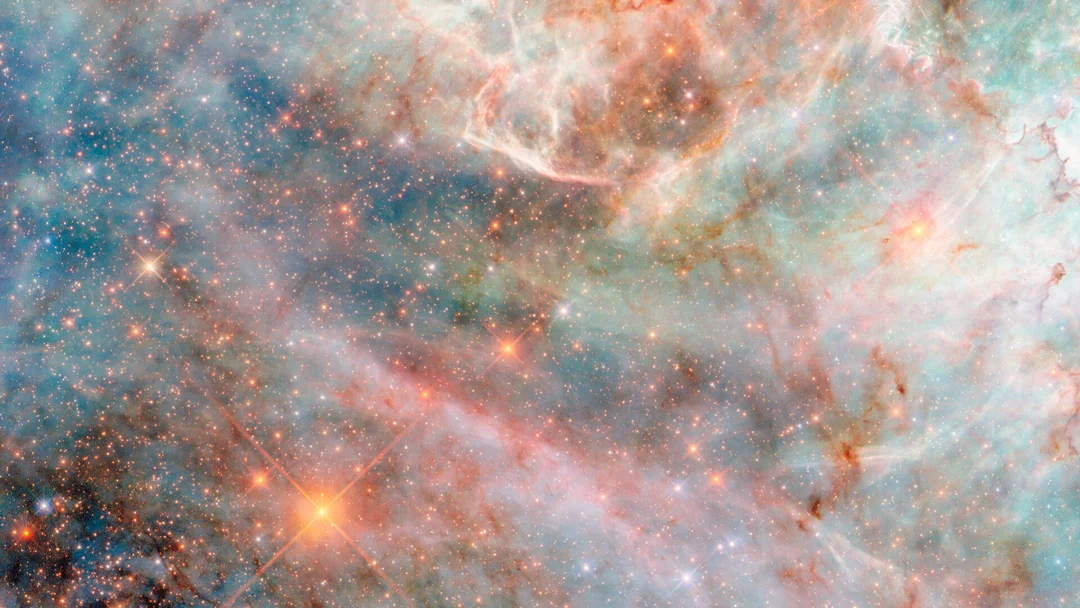
Hubble Captures ‘Candyfloss’ Clouds in a Neighboring Galaxy: A Stunning Visual Feast
The Hubble Space Telescope has once again delivered a breathtaking image, capturing what appears to be shimmering clouds of candyfloss in the Large Magellanic Cloud, a dwarf galaxy and one of the Milky Way's closest neighbors. This stunning visual feast not only captivates the eye but also provides valuable insights into the composition and dynamics of this distant celestial body.

Located approximately 160,000 light-years from Earth in the constellations Dorado and Mensa, the Large Magellanic Cloud (LMC) is not just any satellite galaxy. It boasts a higher rate of star formation compared to the Milky Way and is home to the Tarantula Nebula, one of the largest regions of active star formation known in the nearby Universe.
The vibrant pink, blue, and green hues in the Hubble image aren't just for show. They represent different wavelengths of light, providing scientists with crucial data about the gas and dust composition of the nebula. The image was created using Hubble's Wide Field Camera 3 (WFC3), which employs various filters to capture specific wavelengths, including those outside the human eye's visible spectrum, such as ultraviolet and infrared light.
"This view of dusty gas clouds in the Large Magellanic Cloud is possible thanks to Hubble's cameras," explains a statement from the Hubble astronomers. The WFC3 instrument is key to capturing these diverse wavelengths and creating such detailed imagery.

Many often question the authenticity of the colors in these space images. Image-processing specialists meticulously combine raw data from the filters, assigning colors to each wavelength. Shorter wavelengths, like ultraviolet, are typically rendered in blue or purple, while longer wavelengths, like infrared, are represented in shades of red. This process aims to stay true to reality while revealing information beyond human vision.
The Large Magellanic Cloud continues to be a rich source of astronomical discoveries. Its dynamic star formation regions and its proximity to the Milky Way make it an ideal target for telescopes like Hubble, offering invaluable insights into the evolution of galaxies.
This image serves as a reminder of the beauty and complexity of the universe. What secrets lie hidden within these seemingly delicate 'candyfloss' clouds? Share your thoughts and theories in the comments below!